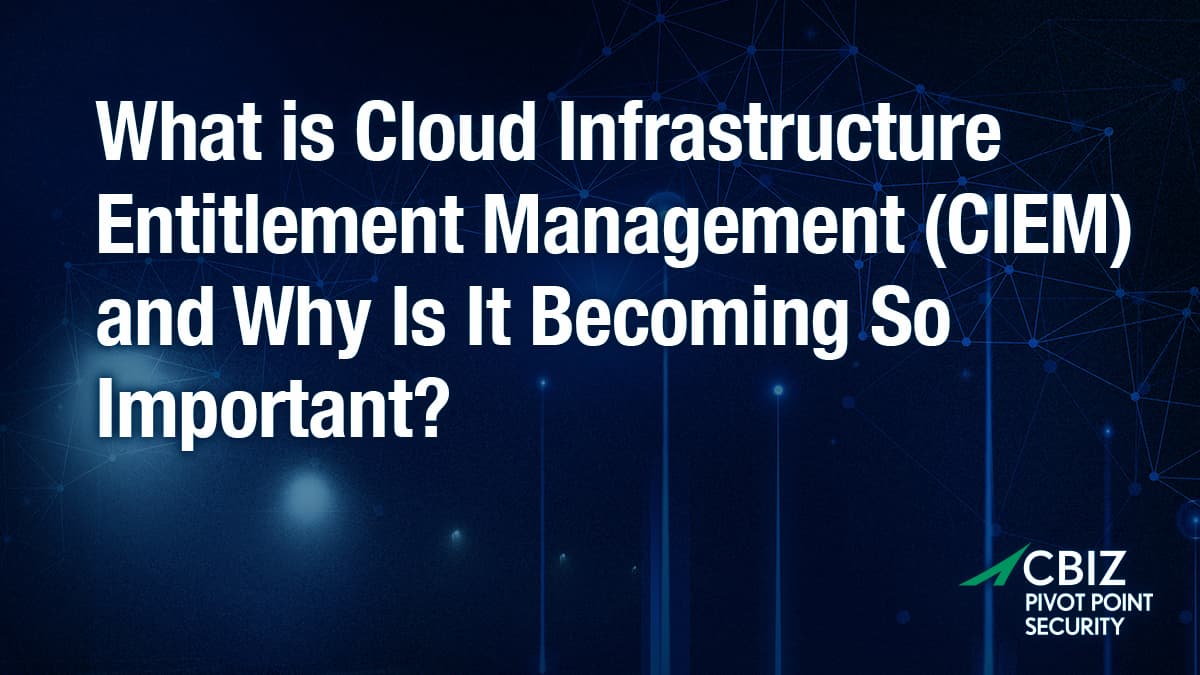Last Updated on September 19, 2024
As businesses deploy more applications and data to cloud and multi-cloud environments, the number and complexity of entitlements needed to control access to these resources, services, and associated identities explodes. Managing all these access rights by hand quickly becomes unworkable—especially when you factor in a least privilege access policy.
Traditional identity & access management (IAM) tools are not designed for the cloud and can’t provide adequate visibility on dynamic, ephemeral cloud resources. Cloud service providers offer platform-specific tools, but these don’t integrate across platforms.
Cloud Infrastructure Entitlement Management (CIEM) solutions help automate the process of managing entitlements, identities, and privileges in multi-cloud and cloud-native scenarios. Sometimes referred to as cloud permissions management, CIEM capabilities are increasingly part of Cloud Native Application Protection Platform (CNAPP) offerings. This article explains what CIEM is, why it’s becoming essential for organizations moving to cloud-native solutions, the benefits it offers, and how it relates to current IAM investments.
What are entitlements in user access?
Entitlements control how users, applications, and services access digital assets, systems, and data within your IT environment. You use entitlements to specify “who” (often not a human, especially in the cloud) has access to what, and under what exact circumstances.
Entitlement management encompasses access rights, permissions, roles, authorizations, and privileges—all of which serve to limit unauthorized access to resources.
It is a best practice to grant entitlements on a least-privilege basis based on users’ job roles. For example, an IT administrator would have very different entitlements from a marketing director, especially when it comes to sensitive assets like source code repositories or customer information.
What cloud challenges does CIEM help solve?
Managing access in multi-cloud environments goes beyond understanding what entities can access resources. In many companies, entitlements are granted not just to human users but also to applications, service accounts, and operational systems like robots, programmable logic controllers (PLCs), and IoT devices—all needing to exchange data 24×7.
As the number of entitlements under management spirals into the hundreds of thousands and beyond, no manual process can keep up with the pace of change. The typical result is excessive default permissions leading to increased cybersecurity risk.
CIEM provides the automation that lets teams monitor and govern access in dynamic, multi-cloud scenarios. CIEM supports visibility and compliance while enabling DevSecOps and cloud-native development.
CIEM’s goal is to enable IT/security teams to:
- Identify all the entitlements and access permissions within their organization’s multi-cloud estate,
- Spot cybersecurity risks and compliance or policy violations associated with those entitlements, and
- Provide automation to eliminate those risks.
The main cybersecurity problem around entitlements is excessive permissions or unnecessarily high access levels. This spreads out the multi-cloud attack surface and increases the risk of unauthorized access to cloud resources. CIEM lets you efficiently enforce least privilege access, a key zero trust tenet that reduces access-related risk.
CIEM also solves the main problems associated with using different CSP’s proprietary identity management tools in a multi-cloud estate, which can create vulnerabilities due to inconsistent configurations and fragmented processes.
CIEM vs IAM: How do they relate?
Both CIEM and IAM are about ensuring that the right users, applications, and services have the correct access to the correct resources in alignment with policy and regulations. But while CIEM is confined to the cloud, IAM covers on-premises assets.
Both CIEM and IAM can offer a single pane of glass for their respective domains, and both help enforce least privilege principles and overall compliance. Both also help reduce access-related cyber risk, though only CIEM normally offers automated vulnerability remediation.
Do you need CIEM or IAM? Unless your cloud or on-premises activities are limited, chances are you need both:
- IAM is a foundational cybersecurity protection for your on-premises IT environments. IAM is also a focal point for provisioning and deprovisioning users, governing company-wide access to on-premises IT resources, and documenting associated compliance activities.
- Because IAM cannot adequately manage access to cloud-based resources, organizations making cloud investments will eventually also need CIEM.
What are CIEM’s top business benefits?
By automating enforcement of a least privilege entitlement policy across public cloud, hybrid cloud, and multi-cloud environments, CIEM offers multiple benefits like:
- A unified view that lets you implement and govern consistent access controls across clouds.
- Continuous monitoring of access patterns to detect suspicious activity in real-time.
- Automation to rapidly enforce policy and reduce the likelihood and potential impacts of incidents like insider threats, business email compromise, stolen passwords, etc.
- A unified, multi-cloud audit trail for entitlements to support continuous compliance and enforce least privilege principles.
- Support for assigning policy-driven permissions at the speed of DevSecOps.
- The ability to analyze user behavior and assign similar permissions to groups of related users.
- A reliable way to weed out inactive identities.
How does CIEM improve multi-cloud cybersecurity?
CIEM gives you end-to-end visibility on entitlements across your multi-cloud landscape, along with proactive monitoring and automated, real-time detection and even remediation of potential threats.
Alone or as part of a unified CNAPP offering, CIEM shrinks your cloud attack surface and reduces business risk associated with cloud migration and cloud-native investments. CIEM improves your cybersecurity posture by allowing you to:
- Develop and manage an accurate, multi-cloud record of entitlements.
- Consistently enforce zero-trust least privilege principles.
- Detect, flag, and automatically remediate high-priority access issues like misconfigurations, policy violations, and inactive identities.
- Put consistent policies/“guardrails” in place across different public clouds.
- Detect and flag suspicious activities potentially associated with internal or external cyberattacks.
- Eliminate the drain on security staff associated with manual activities to improve productivity, efficiency, and job satisfaction.
What’s next?
For more guidance on this topic, listen to Episode 142 of The Virtual CISO Podcast with guest Arick Goomanovsky, Chief Product Officer at Tenable Cloud Security.






















